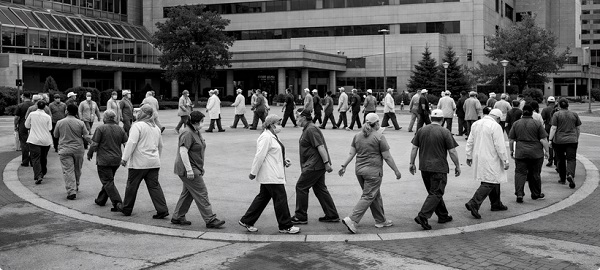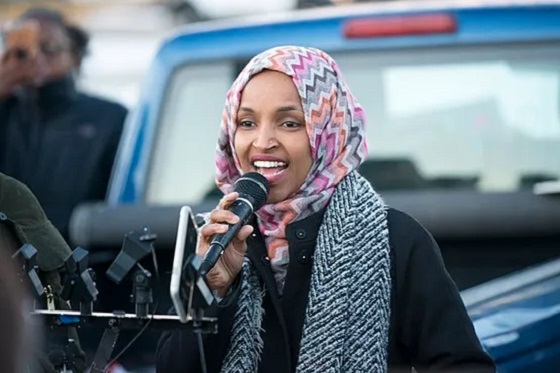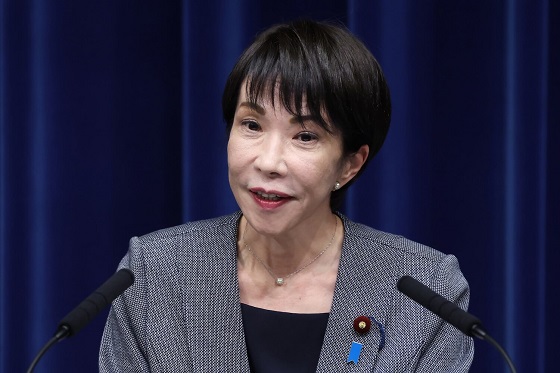Frontier Centre for Public Policy
A letter to five Canadian Churches

From the Frontier Centre for Public Policy
Two years ago, Eric Metaxas, the conservative Christian American author wrote a short, but important, book addressing the American Church. He was concerned the churches were forsaking their Christian principles in not speaking out against the anti-Christian ideologies and practices occurring throughout the U.S.
My letter is limited to admonishing the Canadian churches involved with Canada’s Indian Residential Schools. These churches have not spoken out in support of the missionaries they commissioned to work in these schools, people who poured their lives into their work, and who have been wrongly accused of abusing and murdering residential school children.
Obviously, those employees who are guilty should be condemned and punished, but those who are innocent should not be falsely accused of perpetrating horrific crimes.
Between 1883 and 1996, there were 143 Indian Residential Schools included in the Indian Residential Schools Settlement Agreement, a complex agreement between various Indigenous groups, the federal government, and the churches that managed residential schools.
The Roman Catholic Church managed 62 (43.4%) of the schools, the Church of England (Anglican) managed 35 (24.5%), the United Church (including the denominations that joined together in 1925) managed 19 (13.3%), the Mennonite Church managed 3 (2.1%), and the Baptist Church managed 1 (0.6%) residential school. The federal and territorial governments managed the remaining 23 (16.1%) schools.
There are four historical points to be reviewed.
First, in May 2021, Rosanne Casimer, Chief of the Kamloops Band, announced that ground penetrating radar (GPR) had found 215 unmarked graves of children in the residential schoolyard.
Surprisingly, this was the first public report suggesting that children buried in residential schoolyards had been murdered. There is, however, no credible evidence of murdered residential school children in the 3,500-page Truth and Reconciliation Commission (TRC) Report which was published 6 years earlier.
Second, despite being absent from the TRC’s “Calls to Action,” the federal government has awarded almost $8 million to the Kamloops band to excavate part of the schoolyard, and set aside over $300 million for other bands to search for soil anomalies or presumed graves.
Third, as expected with such strong incentives, many other bands have claimed that they too have graves of missing and presumed murdered children buried in the schoolyards on their reserves.
Finally, in an impressive gesture of support, Prime Minister Justin Trudeau knelt beside a grave in a well-known cemetery with a teddy bear in his hand decrying the genocide perpetrated by the churches. Later, he had the Canadian flags at government buildings around the world flown at half-mast for 6 months so that both Canadians and citizens of the world would mourn this Canadian tragedy.
Since the spring of 2021, almost 100 Christian churches have been vandalized, desecrated, or set on fire, supposedly because of the “genocide” that had taken place at the sites of Indian Residential Schools. Sadly, some of these churches, the Lutheran and Orthodox churches, for example, did not manage any of the schools.
No doubt, most Canadians are thankful there is no forensic evidence that children have been murdered and buried in schoolyards. Of course, there are children’s bodies in parish cemeteries that are often close to the schools, but most of them died of communicable diseases like influenza and TB, and they have been given proper funerals.
My concern is that over the last three years, the five churches that managed Indian Residential Schools have said little or nothing to defend themselves or the staff they commissioned to work in the schools.
In a time of need, both Indigenous and non-Indigenous Christians stepped forward to care for children living in residential schools. But the churches have not stepped forward to defend their staff in their time of need. These people are getting old, and they need support now. Instead, the churches have abandoned, or worse, condemned their faithful employees for abusing children.
Equally surprising, no church leader has supported the fundamental principle of Canadian law: individuals (and churches) are considered innocent until they are proven guilty.
It grieves me, and the few other living residential school employees, that our churches have not publically supported their innocent employees. Surely, they have a moral obligation to ensure that truth and justice prevail.
Eric Metaxas has tried to awaken American churches by pointing out where they have gone wrong. Should we not try to awaken Canadian churches to defend their involvement in Indian residential schools?
Is it too much to suggest that the church leaders think back to lessons learned from Martin Luther King Jr. and Dietrich Bonhoeffer who stood up for Christian principles against the evil practice of dehumanizing people—Blacks in the U.S. and Jews in Europe?
Not only will these churches be judged by the moral and ethical lessons they preach, but, more importantly, by the principles they live by. Canadians will see the true values of church leaders in their actions, especially concerning those they commissioned to work in their schools.
Rodney A. Clifton lived for 4 months in Old Sun, the Anglican residential school on the Siksika (Blackfoot) First Nation during the summer of 1966, and he was the Senior Boys’ Supervisor in Stringer Hall, the Anglican residential hostel in Inuvik during the 1966-67 school year. He is a Professor Emeritus at the University of Manitoba and a senior fellow at the Frontier Centre for Public Policy. His most recent book, with Mark DeWolf, is From Truth Comes Reconciliation: An Assessment of the Truth and Reconciliation Commission Report. The book will be out on November 5, and it can be preordered from the publisher.
Rodney A. Clifton is a professor emeritus at the University of Manitoba and a Senior Fellow at the Frontier Centre for Public Policy. He lived for four months in Old Sun, the Anglican Residential School on the Blackfoot (Siksika) First Nation, and was the Senior Boys’ Supervisor in Stringer Hall, the Anglican residence in Inuvik. Rodney Clifton and Mark DeWolf are the editors of From Truth Comes Reconciliation: An Assessment of the Truth and Reconciliation Commission Report (Frontier Centre for Public Policy, 2021). A second and expanded edition of this book will be published in early 2024.
Business
The Real Reason Canada’s Health Care System Is Failing

From the Frontier Centre for Public Policy
By Conrad Eder
Conrad Eder supports universal health care, but not Canada’s broken version. Despite massive spending, Canadians face brutal wait times. He argues it’s time to allow private options, as other countries do, without abandoning universality.
It’s not about money. It’s about the rules shaping how Canada’s health care system works
Canada’s health care system isn’t failing because it lacks funding or public support. It’s failing because governments have tied it to restrictive rules that block private medical options used in other developed countries to deliver timely care.
Canada spends close to $400 billion a year on health care, placing it among the highest-spending countries in the Organization for Economic Co-operation and Development (OECD). Yet the system continues to struggle with some of the longest waits for care, the fewest doctors per capita and among the lowest numbers of hospital beds in the OECD. This is despite decades of spending increases, including growth of 4.5 per cent in 2023 and 5.7 per cent in 2024, according to estimates from the Canadian Institute for Health Information.
Canadians are losing confidence that government spending is the solution. In fact, many don’t even think it’s making a difference.
And who could blame them? Median health care wait times reached 30 weeks in 2024, up from 27.7 weeks in 2023, which was up from 27.4 weeks in 2022, according to annual surveys by the Fraser Institute.
Nevertheless, politicians continue to tout our universal health care system as a source of national pride and, according to national surveys, 74 per cent of Canadians agree. Yet only 56 per cent are satisfied with it. This gap reveals that while Canadians value universal health care in principle, they are frustrated with it in practice.
But it isn’t universal health care that’s the problem; it’s Canada’s uniquely restrictive version of it. In most provinces, laws restrict physicians from working simultaneously in public and private systems and prohibit private insurance for medically necessary services covered by medicare, constraints that do not exist in most other universal health care systems.
The United Kingdom, France, Germany and the Netherlands all maintain universal health care systems. Like Canada, they guarantee comprehensive insurance coverage for essential health care services. Yet they achieve better access to care than Canada, with patients seeing doctors sooner and benefiting from shorter surgical wait times.
In Germany, there are both public and private hospitals. In France, universal insurance covers procedures whether patients receive them in public hospitals or private clinics. In the Netherlands, all health insurance is private, with companies competing for customers while coverage remains guaranteed. In the United Kingdom, doctors working in public hospitals are allowed to maintain private practices.
All of these countries preserved their commitment to universal health care while allowing private alternatives to expand choice, absorb demand and deliver better access to care for everyone.
Only 26 per cent of Canadians can get same-day or next-day appointments with their family doctor, compared to 54 per cent of Dutch and 47 per cent of English patients. When specialist care is needed, 61 per cent of Canadians wait more than a month, compared to 25 per cent of Germans. For elective surgery, 90 per cent of French patients undergo procedures within four months, compared to 62 per cent of Canadians.
If other nations can deliver timely access to care while preserving universal coverage, so can Canada. Two changes, inspired by our peers, would preserve universal coverage and improve access for all.
First, allow physicians to provide services to patients in both public and private settings. This flexibility incentivizes doctors to maximize the time they spend providing patient care, expanding service capacity and reducing wait times for all patients. Those in the public system benefit from increased physician availability, as private options absorb demand that would otherwise strain public resources.
Second, permit private insurance for medically necessary services. This would allow Canadians to obtain coverage for private medical services, giving patients an affordable way to access health care options that best suit their needs. Private insurance would enable Canadians to customize their health coverage, empowering patients and supporting a more responsive health care system.
These proposals may seem radical to Canadians. They are not. They are standard practice everywhere else. And across the OECD, they coexist with universal health care. They can do the same in Canada.
Alberta has taken an important first step by allowing some physicians to work simultaneously in public and private settings through its new dual-practice model. More Canadian provinces should follow Alberta’s lead and go one step further by removing legislative barriers that prohibit private health insurance for medically necessary services. Private insurance is the natural complement to dual practice, transforming private health care from an exclusive luxury into a viable option for Canadian families.
Canadians take pride in their health care system. That pride should inspire reform, not prevent it. Canada’s health care crisis is real. It’s a crisis of self-imposed constraints preventing our universal system from functioning at the level Canadians deserve.
Policymakers can, and should, preserve universal health care in this country. But maintaining it will require a willingness to learn from those who have built systems that deliver universality and timely access to care, something Canada’s current system does not.
Conrad Eder is a policy analyst at the Frontier Centre for Public Policy.
Business
Ottawa Is Still Dodging The China Interference Threat

From the Frontier Centre for Public Policy
By Lee Harding
Alarming claims out of P.E.I. point to deep foreign interference, and the federal government keeps stalling. Why?
Explosive new allegations of Chinese interference in Prince Edward Island show Canada’s institutions may already be compromised and Ottawa has been slow to respond.
The revelations came out in August in a book entitled “Canada Under Siege: How PEI Became a Forward Operating Base for the Chinese Communist Party.” It was co-authored by former national director of the RCMP’s proceeds of crime program Garry Clement, who conducted an investigation with CSIS intelligence officer Michel Juneau-Katsuya.
In a press conference in Ottawa on Oct. 8, Clement referred to millions of dollars in cash transactions, suspicious land transfers and a network of corporations that resembled organized crime structures. Taken together, these details point to a vulnerability in Canada’s immigration and financial systems that appears far deeper than most Canadians have been told.
P.E.I.’s Provincial Nominee Program allows provinces to recommend immigrants for permanent residence based on local economic needs. It seems the program was exploited by wealthy applicants linked to Beijing to gain permanent residence in exchange for investments that often never materialized. It was all part of “money laundering, corruption, and elite capture at the highest levels.”
Hundreds of thousands of dollars came in crisp hundred-dollar bills on given weekends, amounting to millions over time. A monastery called Blessed Wisdom had set up a network of “corporations, land transfers, land flips, and citizens being paid under the table, cash for residences and property,” as was often done by organized crime.
Clement even called the Chinese government “the largest transnational organized crime group in the history of the world.” If true, the allegation raises an obvious question: how much of this activity has gone unnoticed or unchallenged by Canadian authorities, and why?
Dean Baxendale, CEO of the China Democracy Fund and Optimum Publishing International, published the book after five years of investigations.
“We followed the money, we followed the networks, and we followed the silence,” Baxendale said. “What we found were clear signs of elite capture, failed oversight and infiltration of Canadian institutions and political parties at the municipal, provincial and federal levels by actors aligned with the Chinese Communist Party’s United Front Work Department, the Ministry of State Security. In some cases, political donations have come from members of organized crime groups in our country and have certainly influenced political decision making over the years.”
For readers unfamiliar with them, the United Front Work Department is a Chinese Communist Party organization responsible for influence operations abroad, while the Ministry of State Security is China’s main civilian intelligence agency. Their involvement underscores the gravity of the allegations.
It is a troubling picture. Perhaps the reason Canada seems less and less like a democracy is that it has been compromised by foreign actors. And that same compromise appears to be hindering concrete actions in response.
One example Baxendale highlighted involved a PEI hotel. “We explore how a PEI hotel housed over 500 Chinese nationals, all allegedly trying to reclaim their $25,000 residency deposits, but who used a single hotel as their home address. The owner was charged by the CBSA, only to have the trial shut down by the federal government itself,” he said. The case became a key test of whether Canadian authorities were willing to pursue foreign interference through the courts.
The press conference came 476 days after Bill C-70 was passed to address foreign interference. The bill included the creation of Canada’s first foreign agent registry. Former MP Kevin Vuong rightly asked why the registry had not been authorized by cabinet. The delay raises doubts about Ottawa’s willingness to confront the problem directly.
“Why? What’s the reason for the delay?” Vuong asked.
Macdonald-Laurier Institute foreign policy director Christopher Coates called the revelations “beyond concerning” and warned, “The failures to adequately address our national security challenges threaten Canada’s relations with allies, impacting economic security and national prosperity.”
Former solicitor general of Canada and Prince Edward Island MP Wayne Easter called for a national inquiry into Beijing’s interference operations.
“There’s only one real way to get to the bottom of what is happening, and that would be a federal public inquiry,” Easter said. “We need a federal public inquiry that can subpoena witnesses, can trace bank accounts, can bring in people internationally, to get to the bottom of this issue.”
Baxendale called for “transparency, national scrutiny, and most of all for Canadians to wake up to the subtle siege under way.” This includes implementing a foreign influence transparency commissioner and a federal registry of beneficial owners.
If corruption runs as deeply as alleged, who will have the political will to properly respond? It will take more whistleblowers, changes in government and an insistent public to bring accountability. Without sustained pressure, the system that allowed these failures may also prevent their correction.
Lee Harding is a research fellow for the Frontier Centre for Public Policy.
-

 Business2 days ago
Business2 days agoDisclosures reveal Minnesota politician’s husband’s companies surged thousands-fold amid Somali fraud crisis
-

 Alberta2 days ago
Alberta2 days agoThe Canadian Energy Centre’s biggest stories of 2025
-

 Business2 days ago
Business2 days agoResurfaced Video Shows How Somali Scammers Used Day Care Centers To Scam State
-

 Business22 hours ago
Business22 hours agoThe Real Reason Canada’s Health Care System Is Failing
-

 Business2 days ago
Business2 days agoMinneapolis day care filmed empty suddenly fills with kids
-

 Business2 days ago
Business2 days agoOttawa Is Still Dodging The China Interference Threat
-

 Business21 hours ago
Business21 hours agoFederal funds FROZEN after massive fraud uncovered: Trump cuts off Minnesota child care money
-

 Opinion13 hours ago
Opinion13 hours agoGlobally, 2025 had one of the lowest annual death rates from extreme weather in history



